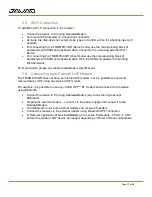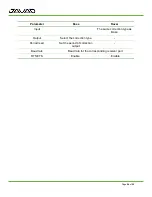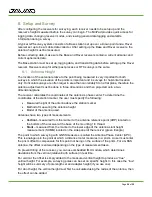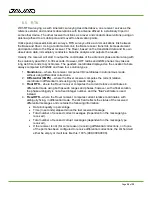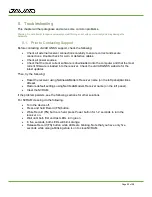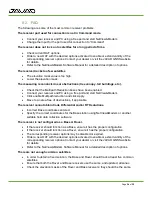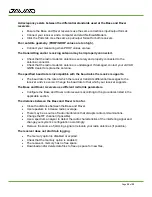
Page
28
of
35
6.3. Static Survey
Static surveying is a classic survey method, well suited for all kinds of baselines (short, medium,
long). At least two receiver antennas, plumbed over survey marks, simultaneously collect raw
data at each end of a baseline. These two receivers track four or more common satellites, have
a common data logging rate (5–30 seconds), and the same elevation mask angles. The length
of the observation sessions can vary from a few minutes to several hours. The optimal
observation session length depends on the following factors:
•
The length of the baseline measured.
•
The number of satellites in view.
•
Satellite geometry (DOP).
•
The antenna’s location.
•
The ionospheric activity levels.
•
The types of receivers used.
•
The accuracy requirements.
•
The necessity of resolving carrier phase ambiguities.
Generally, single-frequency receivers are used for baselines whose lengths do not exceed 15
kilometers (9.32 miles). For baselines of 15 kilometers or greater, use dual-frequency receivers.
Dual-frequency receivers have two major benefits. First, dual frequency receivers can estimate
and remove almost all ionospheric effect from the code and carrier phase measurements,
providing much greater accuracy than single-frequency receivers over long baselines or during
ionospheric storms. Secondly, dual-frequency receivers need far less observation time to reach
the desired accuracy requirement.
After the survey is complete, data the receivers collect can be downloaded onto a computer and
processed using post-processing software (for example, JAVAD GNSS Justin3).




